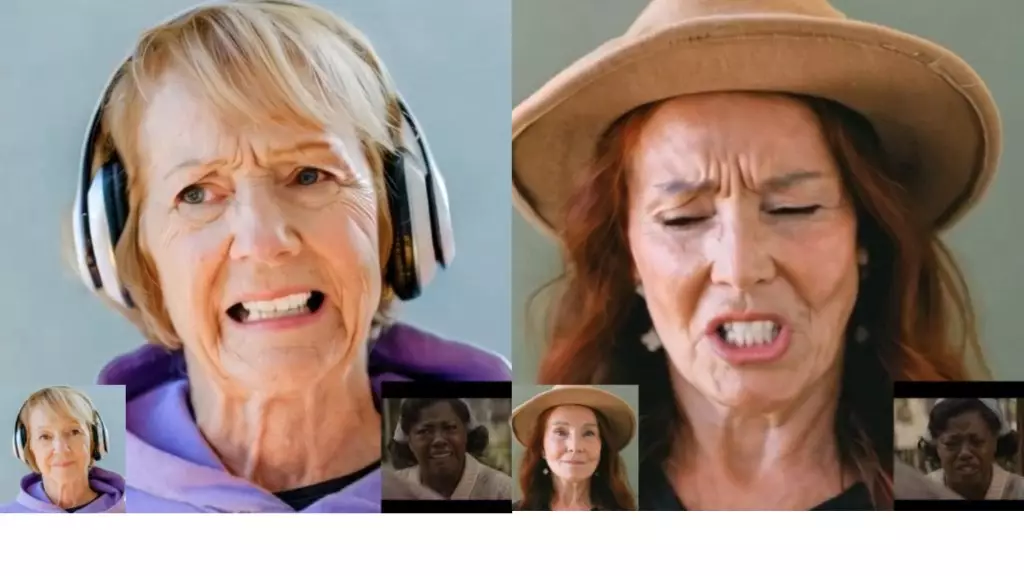The world of artificial intelligence is rapidly evolving, and at the forefront of this change is ByteDance, the Chinese technology firm predominantly recognized for its widely popular platform, TikTok. In a significant breakthrough, the company recently revealed its innovative artificial intelligence system called “X-Portrait 2.” This groundbreaking technology has the power to convert still photographs into compelling video performances, infused with subtle expressions and emotional nuances that closely rival real-world footage. The implications of this advancement are profound, raising questions about authenticity, creativity, and the potential for misinformation in an increasingly visual digital landscape.
What sets X-Portrait 2 apart from other AI animation tools is its ability to capture the intricate interplay of human expressions. By attentively analyzing entire facial movements rather than simply tracking specific points—a method commonly used in the industry—ByteDance’s system offers unparalleled realism. Older technologies often produced mechanical outputs that felt artificial and stilted. However, X-Portrait 2 harnesses the fluid dynamics of the human face, allowing it to replicate the nuances of emotions such as fear, joy, and rage. This level of detail is made possible through vast training data derived from TikTok, which generates billions of user-created videos daily, incorporating a diverse range of facial expressions under varying lighting and camera conditions.
The ability to reproduce the essence of human emotions presents both exciting opportunities and daunting challenges. Innovations in this arena that can convincingly animate a still photo open avenues for creative expression in filmmaking, photography, and even interactive media. Still, they simultaneously raise pressing ethical concerns regarding the accuracy and integrity of the content produced. As we witness the convergence of AI and creative domains, the question arises—what will this mean for originality in an era where digital recreation of human expression is increasingly accessible?
As ByteDance releases X-Portrait 2, it simultaneously expands its global presence, initiating research centers in Europe, including potential facilities in Switzerland, the UK, and France, alongside a massive $2.13 billion project in Malaysia. This strategic move signals not only a commitment to AI research but also an intention to scale operations beyond its domestic market. Despite facing increasing regulatory scrutiny in Western regions—such as Canada’s recent restriction on TikTok and ongoing political debates in the U.S.—ByteDance is not stalling its technical advancements.
The juxtaposition of expansion amidst regulatory challenges speaks to a broader trend in the tech landscape, especially concerning Chinese firms. As these companies navigate international laws and cultural expectations about technology, they must balance innovation with responsibility. The dawn of X-Portrait 2 offers a glimpse into a future where the melding of advanced technology and artistic expression could redefine what constitutes “real” in digital interactions.
One of the most significant implications of X-Portrait 2 is its potential disruption of conventional processes within the animation and film industries. Major studios invest heavily in expensive motion-capture technology and extensive teams of animators to achieve lifelike facial expressions. With the introduction of X-Portrait 2, it’s conceivable that a single photographer paired with a reference video could diminish the need for large-scale production setups, reshaping the landscape of animation and visual storytelling.
However, this transformation raises critical concerns over digital rights and the ethical use of AI-generated content. The ability to create highly realistic performances salvages questions about ownership and consent, particularly when depicting individuals without their approval. While ByteDance has chosen to maintain the implementation details of X-Portrait 2 as proprietary, limiting the risk of misuse, this decision frames the ongoing dialogue around the moral implications of generative AI technologies.
ByteDance’s focus on understanding human movement and expression positions it uniquely in the tech landscape, particularly at a time when both work and personal interactions are increasingly migrating to virtual platforms. The company’s insights, derived from years of analyzing user-generated content on TikTok, establish a groundwork for how human emotion can be accurately transmitted in digital environments. As technology continues to evolve, the ability to authentically represent emotions will likely become paramount for effective communication in remote settings.
As demand grows for AI-generated content across various industries—ranging from entertainment to educational tools to business communications—questions related to verification and trust in AI creations will become critical. The balance between innovation and security will be an essential part of the discourse going forward, as AI transforms how we perceive and interact with digital content.
While ByteDance’s X-Portrait 2 symbolizes a watershed moment in AI development, it also opens up a series of discussions that intersect technology, ethics, and creativity. As the lines between human and machine-generated content continue to blur, society must navigate the complexities of trust and authenticity in an increasingly digital world.


Leave a Reply
You must be logged in to post a comment.